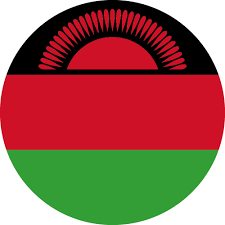Employer of record in Gambia
Employer of record in Gambia
Employer of record in Gambia
Employer of record in Gambia

The Gambia is the smallest country on mainland Africa, located in West Africa and almost entirely surrounded by Senegal, except for its western coastline along the Atlantic Ocean. The country follows the path of the Gambia River, which flows through its center. Banjul is the capital, while Serekunda and Brikama are among its largest cities.
Gambia has a diverse culture with influences from various ethnic groups, including the Mandinka, Fula, and Wolof. The official language is English, and the economy relies on agriculture, tourism, and remittances. The country is known for its wildlife, especially in the Gambia River National Park and its beaches along the Atlantic coast.
Employee Benefits
PAID TIME OFF
Annual Leave: An employee’s entitlement to annual leave is determined by their employment contract. Typically, annual leave is fully paid at the employee’s standard wage rate. If a public holiday occurs during the annual leave period, the employee is entitled to an additional day’s pay as compensation.
Sick Leave: There is no statutory requirement for sick leave in Gambia. The terms regarding sick leave, including payment rates, are usually specified in the employment contract or collective bargaining agreements.
Maternity Leave: Female employees are entitled to 14 weeks of paid maternity leave. They have two options:
- Start leave before the expected delivery date, ensuring at least six weeks are taken post-delivery.
- Begin the full 14-week leave period after delivery. To qualify for paid maternity leave, the employee must have worked for the company for a minimum of two years. Otherwise, they may take unpaid maternity leave.
Paternity Leave: Male employees who have worked for their employer for at least one year are entitled to five consecutive working days of paternity leave.
Public Holidays: Gambia observes 13 public holidays annually, which are paid days off.
STATUTORY EMPLOYEE BENEFITS
Unemployment Benefits: If an employee’s contract is terminated due to redundancy or business closure, they are entitled to severance pay, typically calculated as one month’s basic salary per year of service.
Workers’ Compensation: Employees who suffer work-related injuries or occupational diseases qualify for workers’ compensation under Social Security regulations. To be eligible, the employee must be unable to work for at least five consecutive days. Injuries sustained while commuting to and from work are covered. Occupational diseases must be diagnosed within 12 months of employment termination to qualify for benefits.
Social Security
Federated Pension Scheme (FPS): A mandatory pension scheme providing employees with a steady income upon retirement. Payments depend on age, final salary, and years of service.
- Eligibility: Full-time employees aged 18-60 working for registered employers.
- Contributions: Employers contribute 15% of the employee’s gross salary.
- Administration: Managed by the Social Security and Housing Finance Corporation (SSHFC).
National Provident Fund (NPF): A defined contribution retirement fund where both employers and employees contribute.
- Eligibility: Applies to employees and employers registered under the Business Registration Act 1973.
- Contributions: Employees contribute 5%, while employers contribute 10% of the basic salary.
Benefits:
- Lump sum payout at age 60.
- Early withdrawal from age 45 with a cooling-off period.
- Redundancy benefits for members with at least five years of contributions.
- Disability benefits for permanently disabled members.
- Survivor benefits for dependents of deceased members.
- Marriage withdrawal for female employees retiring due to marriage.
Industrial Injuries Compensation Fund (IICF): Covers workplace injuries and occupational diseases.
- Eligibility: Available to employees in government, public enterprises, private sector, and local authorities.
- Contributions: 1% of total earnings, subject to a contribution ceiling.
- Administration: Managed by SSHFC and the Labour Department, with input from the Social Welfare and Health Departments.
Retirement Benefits: Under FPS, 75% of employer contributions are paid as an annuity, and 25% as a lump sum. Early retirement results in reduced pension payouts. Under NPF, employees receive a lump sum of total contributions with accrued interest. Employees retiring voluntarily at 55+ with five years of contributions receive 85% of benefits, or 70% if retiring at 45-54 with six months of unemployment.
Health Insurance: Administered by the National Social Security and Insurance Trust (NSSIT).
PRIVATE EMPLOYEE BENEFITS
Retirement Plans: No mandatory private pension schemes.
Health Insurance: Private healthcare options are available.
Life Insurance: Employees can opt for private life insurance at their own discretion or if offered by employers.
TAXATION
Personal Income Tax: The tax year runs from January 1 to December 31.
Tax Rates:
- 0 – 24,000 GMD: 0%
- 24,001 – 34,000 GMD: 5%
- 34,001 – 44,000 GMD: 10%
- 44,001 – 54,000 GMD: 15%
- 54,001 – 64,000 GMD: 20%
- 64,000 GMD and above: 25%
Taxation Method: Gambia follows a Pay-As-You-Earn (PAYE) system with a progressive tax structure.
Double Taxation Agreements: Gambia has tax treaties to prevent double taxation.
Residence Requirements: Non-residents are taxed only on Gambian-sourced income. A non-resident is an individual who does not spend at least 183 days in Gambia within a tax year and is not a government official posted abroad.
PAYROLL ELEMENTS
Salary and Bonuses: Salaries include earnings, bonuses, overtime, and taxable benefits. Bonuses are not mandatory but are common.
Allowances: Determined by employment contracts.
Fringe Benefits: Employers may offer non-monetary benefits such as housing, vehicles, and insurance. Fringe benefits tax is 27% (as of 2021).
Capital Gains Tax: Capital assets sold in Gambia are subject to tax. Residents pay tax on worldwide assets, while non-residents are only taxed on Gambian assets.
- Individuals: 15% of gains or 5% of sale price, whichever is higher.
- Corporations/Partnerships: 25% of gains or 10% of sale price, whichever is higher.
PAYROLL TAXES AND EMPLOYER CONTRIBUTIONS
Payroll Tax (Expatriate Quota Tax): Employers hiring foreign workers must pay this tax. Expatriates cannot exceed 20% of the workforce without government approval.
Social Security Contributions:
- FPS: Employers contribute 15% of gross salary.
- NPF: Employees contribute 5%, and employers contribute 10%.
- IICF: Employers contribute 1% of earnings.
Severance Pay: Employees terminated due to redundancy or business closure receive one month’s salary per year of service.
Risk Insurance: Administered by NSSIT.
ADMINISTRATION
Payroll Schedules: Employers are not required to follow a fixed payroll schedule, but monthly payments are standard.
Income Tax Withholding: Employers must deduct PAYE from employee salaries.
Allowable Deductions: Tax-exempt benefits include:
- Pension contributions.
- Government-provided fringe benefits.
- Exempted employee fringe benefits.
































